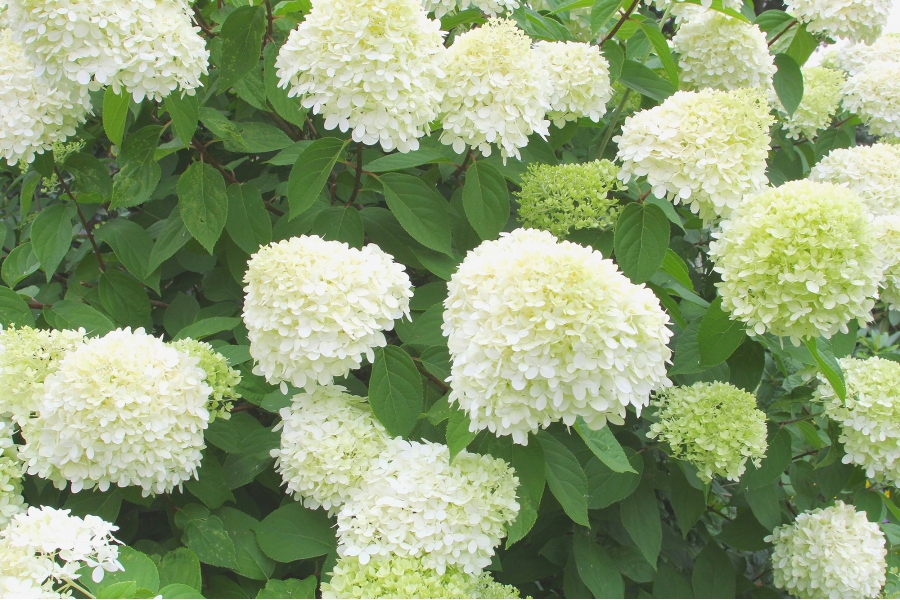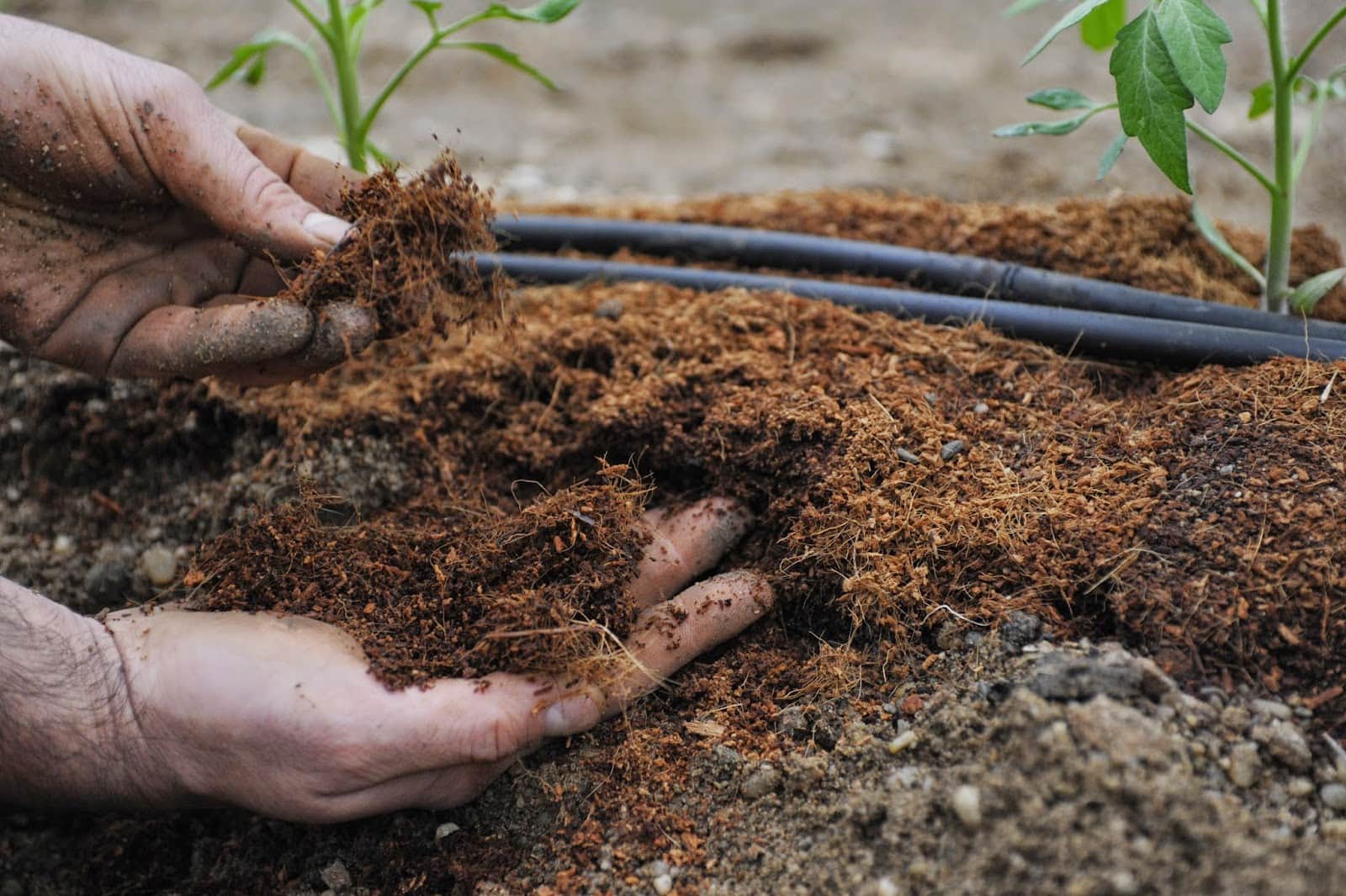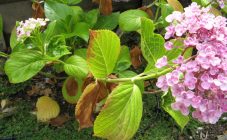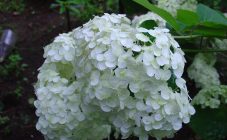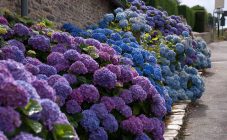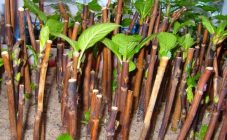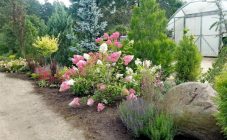Content:
Hydrangea decorates gardens with its lush inflorescence caps until late autumn. This is an unpretentious and uncomplicated plant in agricultural technology. However, it needs proper feeding.
Description of hydrangea
Paniculata hydrangea is of interest to gardeners in central Russia. The homeland of panicle hydrangea is China, Japan, Sakhalin, the Far East. It is found in shrub or tree-like form, there are also vines. If in its native land the plant can reach ten meters in height, then in the Moscow region it is no more than 3-3.5 m. In Russian climatic conditions, three types of shrub hydrangea are grown: paniculate, treelike, large-leaved.
The root system is located close to the surface. The length of the oval leaves reaches 12 cm. Flowering begins at 4-5 years of age. Duration of flowering - from the third decade of June to the end of October.
The panicle differs from other types of hydrangeas in a conical shape of inflorescences, the height of which can exceed 20-25 cm. The panicle consists of sterile and fertile flowers. Sterile four-petal flowers are large (25-30 mm), forming a dense, lush inflorescence and decorative appearance of the whole bush. The color (pink, green, snow-white) depends on the variety. Fertile flowers are smaller and set seeds. Hydrangea is a wonderful honey plant.
Hydrangea paniculata is a long-lived plant that sometimes lives up to 60 years. It grows rapidly, withstands frosts below 25 degrees. Garden hydrangea grows best in light partial shade. Do not expose it to direct sunlight in order to avoid loss of decorative flowers. The soil needs fertile, clayey, acidic, moist.
In temperate climates, panicle hydrangea is planted in spring, in warm regions - in spring and autumn. In the ground dug up on a shovel's bayonet, holes of 40x70 cm are made. To form a hedge, a groove is dug with the same parameters. There should be a distance of 0.7-2.5 m between adjacent plants.
After planting, the hydrangea is watered with a bucket of water, mulched with peat or compost. The ground parts are immediately trimmed, leaving 3-4 buds. Caring for panicle hydrangea consists of regular loosening, weeding, abundant watering, pruning, and feeding.
Feeding conditions
Regular feeding significantly improves the condition of the flower, increases the flowering period, and resistance to cold. Sometimes used fertilizers in combination with the acidity of the soil can change the shade of the inflorescences.
The main signs of a lack of substances:
- dry border of leaves - potassium deficiency;
- leaf chlorosis - lack of iron;
- yellowness of the surface of the leaf plate - lack of nitrogen;
- purple foliage - lack of phosphorus.
By applying fertilizers, you can also adjust the shade of the inflorescences:
- Blue. Potassium sulfate and potassium chloride (60 g each) are mixed in a bucket of peat, laid out around the trunk of the hydrangea and watered abundantly.
- Purple. 1 tbsp. l. ammonium and potassium sulfate per bucket of water - a portion for one bush during the budding period. Top dressing is repeated after the formation of flowers.
- Pinkish.A couple of glasses of wood ash and 1 glass of diluted lime are added to a bucket of humus.
- Snow white. Before planting, the soil at a depth of 15 cm is saturated with potassium sulfate, superphosphate. Coniferous litter, coarse sand, a small amount of humus are added.
Hydrangea feeding rules
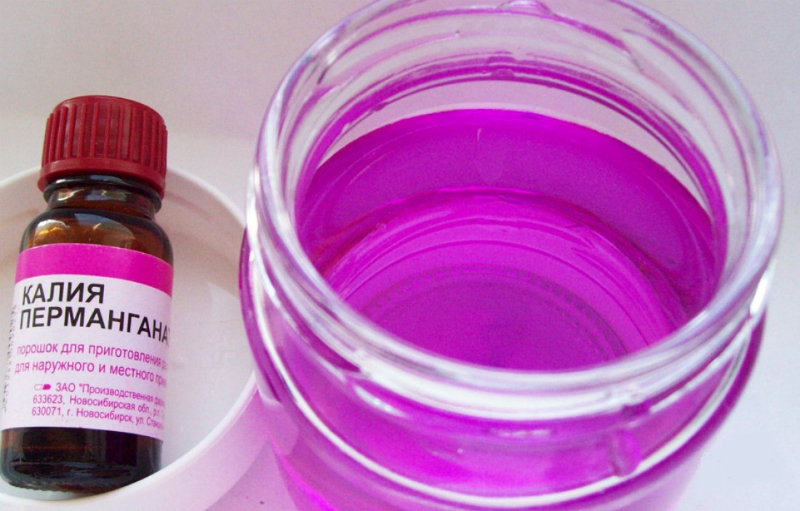
It is recommended to water the plant once a month with a pale pink solution of potassium permanganate
It is recommended to water the plant with a pale pink solution of potassium permanganate once a month to strengthen the plant's tissue structure. They can also be sprayed on leaves. Slurry is also good for hydrangeas throughout the season.
Spring feeding
To strengthen the leaves, the first top dressing is carried out in the spring, in March, as soon as the process of sap flow begins:
- For a 10-liter bucket of water, you need 1 tbsp. l. urea and potassium sulfate. One hydrangea bush requires 5 liters of top dressing.
- As an organic matter, you can add an aqueous solution of slurry in a ratio of 1:10.
- During the period of bud formation, hydrangea must be fertilized with potassium and phosphorus. 1 tablespoon of superphosphate is diluted in 10 liters of water.
Summer feeding
During the flowering period, fertilizing is applied every two weeks. Fertilization scheme:
- The formation of ovaries continues in June. To increase their number, prepare a mixture: 1 tbsp. l. "Nitrofoski", 1 tbsp. l. Agricola, 10 liters of water.
- Midsummer (July) is characterized by active blooming of inflorescences. To stimulate the process, use 1 tbsp. l. fertilizer "Kemira flower" (Fertika) for 10 liters of water.
- In the summer, you can additionally fertilize the plant with nettle (sorrel) infusion diluted in a bucket of water. After that, you should again water the plants with clean water.
- From the first days of August, you should avoid feeding the plant with nitrogen. By increasing the green mass of hydrangeas, nitrogen leads to deformation of the bush under the weight of foliage and inflorescences.
Mineral feeding is alternated with organic (solution of poultry droppings, slurry). Sometimes you can feed the hydrangea with lactic acid products: kefir, yogurt, whey. One part of the product is diluted in 3 parts of water. Soaked, soured bread is a good nutritional supplement for hydrangeas.
Autumn feeding
In the fall, the plant requires potassium-phosphorus fertilizers. For 10 liters of water, you will need 1 tbsp. l. superphosphate and potassium sulfate. For watering one bush, you need 7 liters of solution. From organic matter, compost, peat, humus are used, laying them out in a layer of 10 cm around the bushes.
In the absence of the possibility of regular application of mineral fertilizers, complex granular preparations can be used. As soon as the snow has melted, the fertilizer is embedded in the ground, according to the instructions. It will provide the hydrangea with food for the entire season. The plant should not be additionally fed with minerals.
Fertilizers
Organic fertilizer for panicle hydrangea:
- slurry (1:10);
- green manure;
- mullein solution (3 kg / 10 l);
- humus;
- liquid Biohumus.
Top dressing of hydrangea paniculata can be carried out complex mineral fertilizers of such brands:
- Fertika. Liquid fertilizer is applied every 2 weeks of the growing season. A couple of times a season fertilizer in the form of granules is embedded in the soil.
- Pokon. The brand produces fertilizers with prolonged action. It is enough to scatter the preparation once around the plant, mix with the soil and water.
- Green World. The drug was created specifically to improve the quality of flowering, applied 1-2 times per season.
- Biopon. Nutrient mixture for hydrangea from nitrogen, potassium, phosphorus, magnesium.
- Agrecol. The composition contains nitrogen, potassium oxide and aluminum, which increase the vitality of the plant.
Care Tips for Alkaline Soil
The alkaline environment of the soil leads to a loss of brightness of hydrangea flowers, slowing down and impaired growth. Regular acidification of the soil is necessary. To acidify the soil, additives are used in the form of brown peat, sawdust, coniferous soil, rotted spruce and pine needles.
For light acidification of the soil, ammonium nitrate is used in the spring, in the fall - ammonium sulfate, potassium sulfate. The popular way to quickly deoxidize the soil is with the help of an electrolyte from batteries. To obtain dilute sulfuric acid, 50 ml of electrolyte is added to 10 l of water. This is a portion per 1 m2 of plot.
The health of not only humans, but also plants depends on proper nutrition. If you want to surprise your neighbors with the lush flowering of hydrangeas in the garden, you should carefully consider the feeding scheme.
